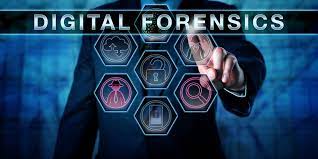Digital Forensics Introduction:
Digital forensics is a crucial field in the realm of cybersecurity, involving the collection, preservation, and analysis of digital evidence. Obtaining certification in digital forensics can enhance your expertise and open doors to rewarding career opportunities. In this article, we’ll outline the steps to earn a certification in digital forensics, empowering you to become a skilled digital investigator.
- Understand Digital Forensics:
- Familiarize Yourself: Gain a comprehensive understanding of what digital forensics entails, including its methodologies, tools, and legal implications.
- Explore Specializations: Digital forensics covers various areas, such as computer forensics, network forensics, mobile device forensics, and more. Determine which specialization aligns with your interests and career goals.
- Educational Background and Prerequisites:
- Educational Foundation: While formal education is not always mandatory, having a background in computer science, cybersecurity, or a related field can provide a strong foundation.
- Prerequisites: Some certifications might have prerequisites, such as a certain level of professional experience or specific training.
- Choose the Right Certification:
- Industry-Recognized Certifications: Research and select certifications that are widely recognized and respected in the digital forensics field. Examples include:
- Certified Digital Forensics Examiner (CDFE)
- Certified Computer Forensics Examiner (CCFE)
- Certified Forensic Computer Examiner (CFCE)
- EnCase Certified Examiner (EnCE)
- CompTIA Cybersecurity Analyst (CySA+)
- Industry-Recognized Certifications: Research and select certifications that are widely recognized and respected in the digital forensics field. Examples include:
- Select a Training Program:
- Self-Study or Formal Training: Decide whether you’ll pursue self-study using online resources and books, or enroll in a formal training program offered by training centers, colleges, or universities.
- Hands-On Labs: Look for training programs that provide hands-on labs and practical exercises to simulate real-world scenarios.
- Prepare for the Exam:
- Review the Exam Blueprint: Understand the topics covered in the certification exam by reviewing the exam blueprint or syllabus provided by the certification body.
- Study Materials: Utilize study guides, practice exams, and recommended reading materials to reinforce your knowledge.
- Practice Using Tools:
- Familiarize Yourself with Tools: Gain proficiency in digital forensics tools and software commonly used in investigations, such as EnCase, FTK (Forensic Toolkit), Autopsy, Wireshark, and more.
- Hands-On Practice: Practice using these tools in controlled environments to perform tasks like data acquisition, analysis, and reporting.
- Join Online Communities:
- Networking: Connect with professionals in the digital forensics field through forums, social media groups, and online communities. Engaging with peers can provide valuable insights and support.
- Exam Registration:
- Certification Body: Register for the certification exam through the official website of the certification body.
- Exam Schedule: Check the exam schedule, fees, and location options (in-person or online) for taking the exam.
- Take the Exam:
- Preparation: Arrive well-prepared for the exam day, review your notes, and ensure you are familiar with the exam format.
- Time Management: Manage your time during the exam, allocating sufficient time to each section.
- Post-Exam Steps:
- Await Results: After completing the exam, await the results. Most certifications provide instant or timely feedback on your performance.
- Continuous Learning: Digital forensics is an evolving field. Stay updated with the latest techniques, tools, and legal regulations by attending workshops, webinars, and conferences.
- Receive Certification:
- Certification Notification: Upon passing the exam, you’ll receive a notification from the certification body.
- Certificate and Logo: You’ll typically receive a digital and physical certificate, along with permission to use the certification logo on your resume and professional profiles.
- Showcasing Your Certification:
- Resume and LinkedIn: Display your certification prominently on your resume and LinkedIn profile to showcase your expertise to potential employers and colleagues.
Conclusion: Earning a certification in digital forensics validates your skills and knowledge in investigating and analyzing digital evidence. By following these steps, you can embark on a rewarding journey towards becoming a certified digital forensics professional, contributing to the cybersecurity landscape and safeguarding digital assets against threats and breaches.

